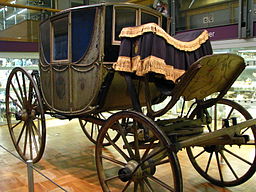by Regan Walker
While doing the research for
Rogue Knight, my new medieval set in 11
th century
England, I learned a lot about the herbs they grew in gardens or were found in the wild. They
were, after all, the only medicine they had. So they used herbs and plants,
individually or together, in
infusions, teas, salves and other forms to treat their various illnesses and
maladies.
Long before the Normans came to England, the Anglo-Saxons
used herbs and plants of all kinds in remedies for things like headaches,
fever, stomach ailments, pain and respiratory illnesses. Winter
was especially hard on medieval society, as cold, drafty dwellings led to
numerous cases of deadly pneumonia.
The earliest
surviving texts that speak of herbal remedies in Old English are from the 9th
century, but there is evidence that older texts were not all in Latin. Bald’s Leechbook and Lacnunga are among the most complete texts.
 |
| Leechbook |
The Leechbook
is an Anglo-Saxon medical manual made up of three books (labeled I, II and
III), probably compiled in the early tenth century. It contains some of the best Mediterranean medicine from
the third to the ninth centuries, so apparently they shared information. While
some of the herbs mentioned in the texts were only available around the
Mediterranean, some were traded from distant areas, such as frankincense, pepper,
silk, ginger and myrrh.
The Lacnunga, a tenth century herbal,
praises nine sacred herbs of the Nordic god Woden: mugwort, plantain, watercress,
betony, chamomile, nettle, chervil, fennel and crab apple. (Thyme occurs in
other lists of the “nine sacred herbs”.)
With the
Norman Conquest, many Anglo-Saxon texts were destroyed and replaced with books
written in Latin. Greek and Roman writings on medicine
were preserved by hand copying of manuscripts in monasteries.
The monasteries thus tended to become
local centers of medical knowledge, and their herb gardens provided the raw
materials for simple treatment of common disorders. At the same time, folk
medicine practiced in the home as well as the village supported numerous
wandering and settled herbalists.
Some
herbs and their uses:
Lemon
Balm: Used in a drink as an aid against melancholy.
Borage: It
was associated with courage: "I, Borage, Bring Courage."
Chickweed: Used
to treat constipation, upset stomach and to promote digestion, also used to
treat asthma and other respiratory problems such as colds. It can be used on
wounds as well.
Horehound: syrups and
drinks for chest and head colds and coughs.
Lemon
Balm: Used in a drink as an aid against melancholy.
Borage: It
was associated with courage: "I, Borage, Bring Courage."
Chickweed: Used
to treat constipation, upset stomach and to promote digestion, also used to
treat asthma and other respiratory problems such as colds. It can be used on
wounds as well.
Horehound: syrups and
drinks for chest and head colds and coughs.
Marjoram: Used in cooking, in spiced wine, in brewing beer and in
medicines to treat the stomach.
 |
| Marjoram |
Mint: Mint vinegar was used as a
mouthwash; mint sauce restored the appetite. Also used for stomach ailments, in
treating fevers and wounds.
Mugwort: A charm for travellers and used
in foot ointments; also used in treating women's ailments.
Nettles: Eating
nettles mixed with the white of an egg cured insomnia. And nettles were used in
salves. Bald’s Leechbook contains a recipe for a nettle-based
ointment for muscular pain.
Rosemary. The flowers, boiled in tea, were
an all-purpose medicine. Putting the leaves under your pillow supposedly guarded
against nightmares. The ashes of the wood were used for cleaning teeth. Brides
and grooms exchanged rosemary wreaths instead of rings; rosemary was also
planted or strewn on graves. Rosemary was burned as an incense to kill or
prevent infection, including the plague.
Rue: a sour-smelling perennial called
“the herb of grace” because it was used as a holy water sprinkler. Also used to
treat venomous bites, and poor eyesight.
Sage: The leaves were used in salads
and green sauces and as a spring tonic.
St.
John’s Wort: Most effective for
curing fever if found by accident, especially on Midsummer's Eve.
Thyme. In addition to its use as a
seasoning, it was burned as a fumigate against infection. Supposedly ladies
embroidered a thyme sprig in flower, along with a bee, on favors for their
favorite knights.
Yarrow: Used to treat headaches and
wounds, especially battle wounds, and the bite of mad dogs. The wound treatment
caused it to be associated with knights.
Willow
bark: Willow bark and
slippery elm, boiled, were used as a tea (sometimes with honey to make it more
palatable) for fever and aches.
Some of the Flowers:
While not herbs, these flowers were used to
treat ills, and the medieval folks also ate flowers.
Calendula, also marygolde
or Mary’s Gold: Flower petals were
used in broths and tonics, and in treatments to strengthen the heart. And they
made nice garden borders and keep away pests.
Chamomile: Used for headaches. Helps to settle
the stomach and soothe the nerves, which may be why it was used in fevers.
Lavender. Used in food, and in refreshing
washes for headaches. It was also used extensively in soaps and baths, as a
personal scent and as a moth repellent.

Linden: In tea, used for insomnia disorders and anxiety. Also used for stomach disorders and diarrhea.
Roses: there were wild roses, of
course. Their petals and the distilled water made from them were widely used in
food as well as for scent, and added to medical preparations to strengthen the
patient generally and to bronchial infections, colds, diarrhea and anxiety.
Do you have a favorite herb you
use today to treat some ailment? Comment for a chance to win book 1 in my
medieval series, The Red Wolf’s Prize.
And don’t forget to check out my newest medieval: Rogue Knight,

York, England 1069… three years
after the Norman Conquest
The
North of England seethes with discontent under the heavy hand of William the
Conqueror, who unleashes his fury on the rebels who dare to defy him. Amid the
ensuing devastation, love blooms in the heart of a gallant Norman knight for a
Yorkshire widow.
A LOVE NEITHER CAN DENY, A
PASSION NEITHER CAN RESIST
Angry
at the cruelty she has witnessed at the Normans’ hands, Emma of York is torn
between her loyalty to her noble Danish father, a leader of the rebels, and her
growing passion for an honorable French knight.
Loyal
to King William, Sir Geoffroi de Tournai has no idea Emma hides a secret that
could mean death for him and his fellow knights.
WAR DREW THEM TOGETHER, WAR
WOULD TEAR THEM APART
War
erupts, tearing asunder the tentative love growing between them, leaving each
the enemy of the other. Will Sir Geoffroi, convinced Emma has betrayed him,
defy his king to save her?
Excerpt…
the first meeting of Sir Geoffroi and Emma
of York… a bit ominous, perhaps, but remember, it led to love.
Dear
God.
She crossed herself and covered
her mouth, fighting the urge to spew at the sight of so much blood and so many
bodies strewn about the clearing, blood congealed on their clothing, their
vacant eyes staring into space. Some of the blood had pooled on the ground to catch
the rays of the sun. The metallic scent of it, carried by the wind, rose in her
nostrils.
At her side, the hound
whimpered.
So
many.
Until the Normans had come,
Yorkshire had been a place of gentle hills, forests and thatched cottages
circling a glistening jewel of a city set between two winding rivers. A place
of children’s voices at play, some of those voices now silenced forever, for
among the bodies lying on the cold ground were mere boys, their corpses cast
aside like broken playthings.
At the sound of heavy footfalls
on the snow-crusted ground, she jerked her head around, her heart pounding in
her chest.
A figure emerged from the trees,
so close she could have touched him.
She cringed. A Norman.
A tall giant of a knight, his
blood-splattered mail a dull gray in the weak winter sun, ripped off his
silvered helm and expelled an oath as he surveyed the dozens of dead. The sword
in his hand still dripped the blood of those he had slain. He was no youth this
one, at least thirty. His fair appearance made her think of Lucifer, the fallen
angel of light. A seasoned warrior of
death who has taken many lives.
Had he killed people she knew?
Her heart raced as fear rose in her chest.
Would she be next?
Links for Rogue Knight:
Regan Walker - Author
Bio
Regan Walker is a #1 bestselling,
multi-published author of Regency, Georgian and Medieval romance. She has been
a featured author on USA TODAY's HEA blog three times and twice nominated for
the prestigious RONE award (her novel, The Red Wolf's Prize is a finalist for
2015). Regan Walker writes historically authentic novels with real history and
real historic figures. She wants her readers to experience history, adventure and
love.
Her work as a lawyer
in private practice and then serving at high levels of government have given her
a love of international travel and a feel for the demands of the “Crown”. Hence
her romance novels
often involve a demanding sovereign who taps his
subjects for “special assignments.”
Regan lives in San
Diego with her golden retriever, Link, who she says inspires her every day to
relax and smell the roses.
www.reganwalkerauthor.com

 The late queen mother lived there
for half a century, edging out for longevity two of Victoria's sons, each of whom lived there
for more than 40 years, non consecutively. It will be a very long time before
any royal can ever exceed the number of years that centenarian resided at Clarence House.--Cheryl Bolen's
passionate Regency-set novel, One Golden Ring, re-released in December after being out of print for many years. It
won the Holt Medallion for Best Historical of 2005. Eloisa James wrote of it,
"Who can resist a marriage of convenience between a couple who have
nothing in common—but passion!"
The late queen mother lived there
for half a century, edging out for longevity two of Victoria's sons, each of whom lived there
for more than 40 years, non consecutively. It will be a very long time before
any royal can ever exceed the number of years that centenarian resided at Clarence House.--Cheryl Bolen's
passionate Regency-set novel, One Golden Ring, re-released in December after being out of print for many years. It
won the Holt Medallion for Best Historical of 2005. Eloisa James wrote of it,
"Who can resist a marriage of convenience between a couple who have
nothing in common—but passion!"
































